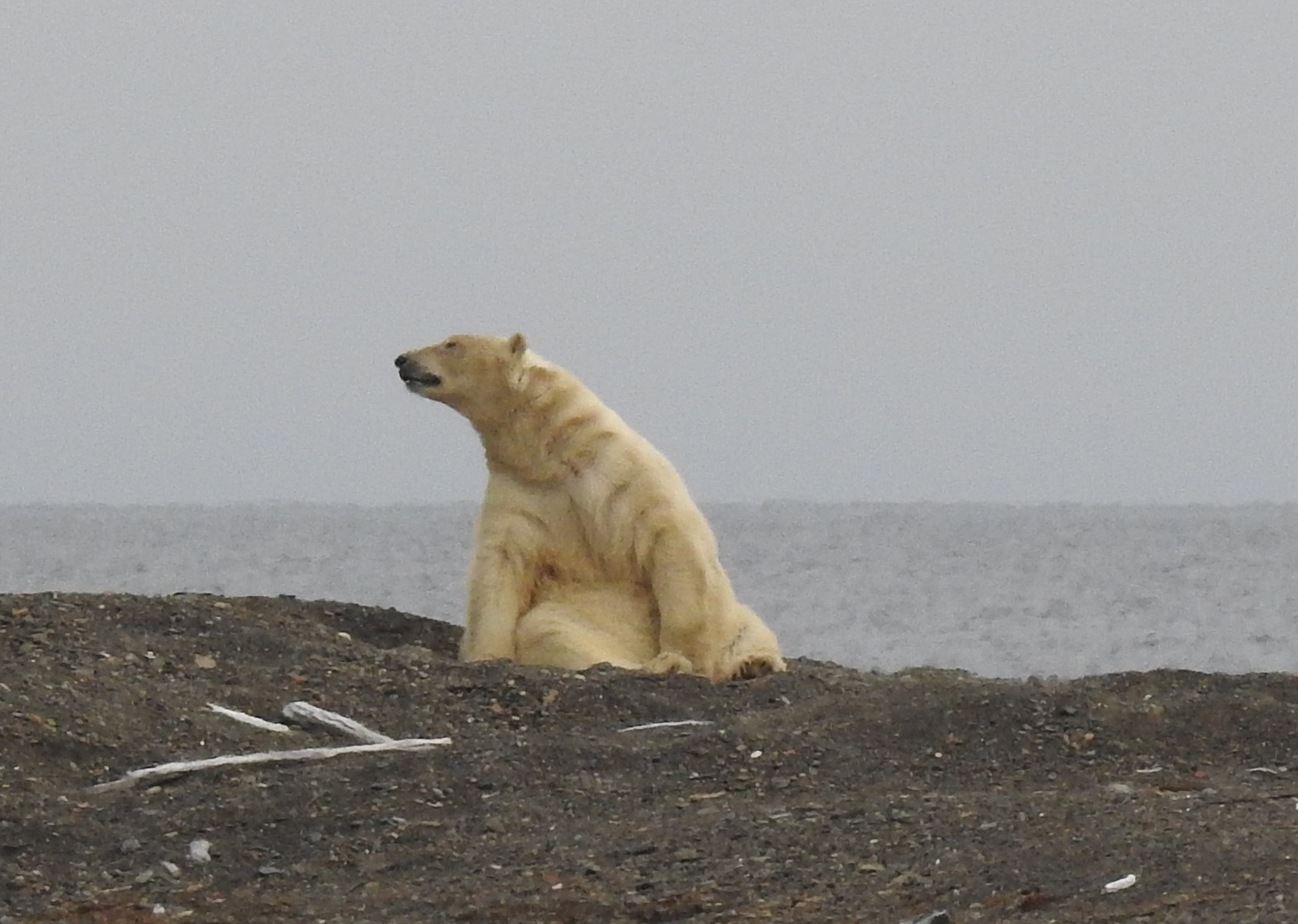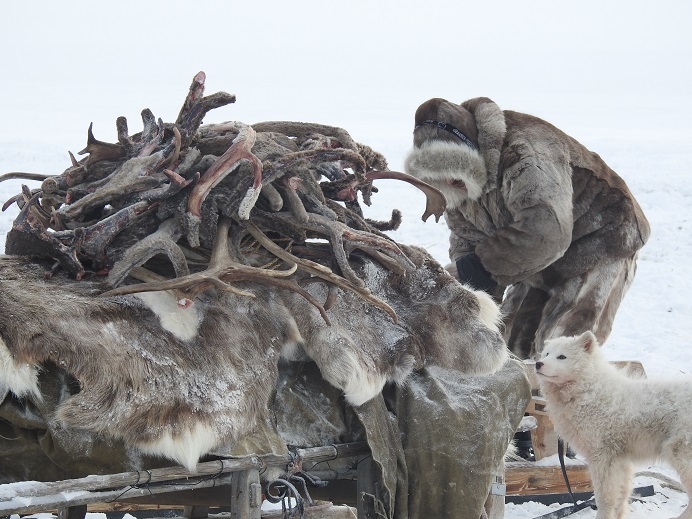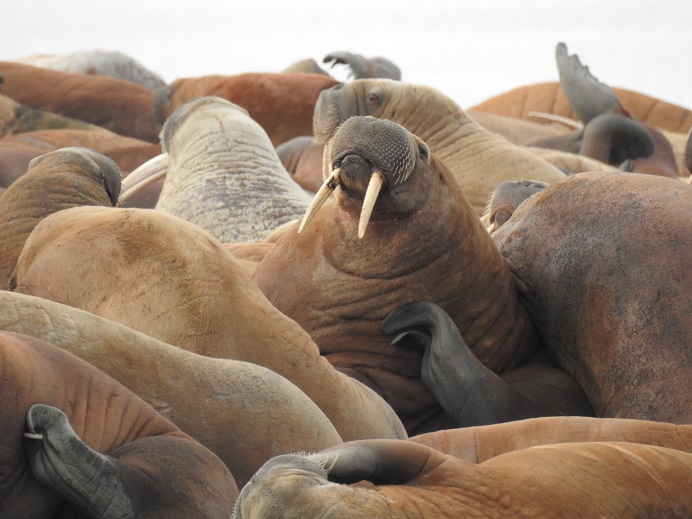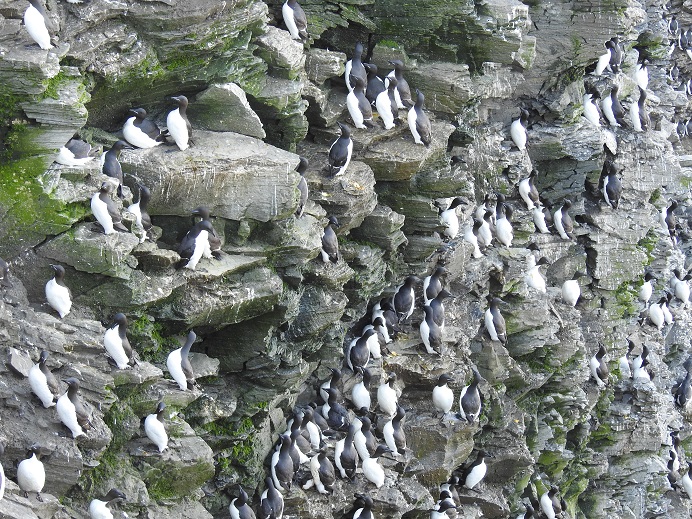Anabar District
Anabar District of Yakutia, along with the neighbouring Taymyr Peninsula, have really got to be two of my favourite places in the world. Located 1000km north of the Arctic Circle, they are isolated enough to have preserved some incredible wildlife as well as the extraordinarily colourful indigenous culture of the Dolgan nomads. Add to this a few extremely well preserved gulag camps, plenty of woolly mammoth remains, a herd of 1 million wild reindeer that migrates through the region, and Northern Lights almost every night during the middle of winter, and what you’re looking at really is one of the world’s best (but least known!) adventure travel destinations. To honour Anabar District I am going to add way more photos to this page than I normally do to destination pages!

Polar bear on Preobrazheniya Island, Anabar District, Arctic Yakutia

Nomadic Dolgan reindeer herder, Anabar District, Arctic Yakutia
Despite having a territory of over 55,000 square kilometres, the district has a population of approximately only 3,200 who live in two villages. Saskylakh, population 2000, is mostly Evenki, while the entire population (1,200) of Yuryung-Khaya, Yakutia’s northernmost village, is of the Dolgan indigenous minority.
The Dolgans, numbering around 7,000 people total, are the northernmost nomads on the planet. They live by migrating with a domestic reindeer herd while at the same time hunting the 1 million wild reindeer that migrate through the region. They build wooden cabins on sledge runners, cover them with reindeer furs for insulation and have the reindeer pull the entire home during migrations to new pastures. These migrations take place roughly once every ten days in winter or once every 2 – 3 days in summer.
Originally the Dolgan area was inhabited only by Samoyed peoples, such as the Nenets and the Nganasan. However, as Yakuts expanded from southern Siberia into Yakutia they pushed the locally Evenki north, who then mixed with the Samoyeds in Anabar District. The Yakut were then themselves pushed north when the Russians arrived in Yakutia in the 17th century, and were added to the Samoyed-Evenki mix. By this time a few Russian peasants had also settled in Anabar District and had become very much nativised, migrating with reindeer as did their neighbours, dressing in the same clothes and worshipping the same gods. It was the eventual mixture of these Samoyed, Evenki, Yakut and Russian groups that formed today’s Dolgan people. Their language is most closely related to Yakut, but their sledge design and use of dogs in reindeer herding resembles the Samoyeds. Their choice of dwelling, a “balok” cabin pulled by reindeer on migrations, was originally a Russian design but the fact that in summer they ride the reindeer without sledges is most characteristic of the Evenki.
Unlike the Nenets of the Yamal Peninsula, who wear fur boots and a knee-length fur jacket with attached hood and mittens, the Dolgans wear many different items of traditional reindeer fur clothing – fur boots, fur trousers, a fur coat, a fur hood, then one huge outer fur coat for when migrating or travelling long distances.
As for the district’s interesting wildlife, most of it is located on the Arctic Ocean islands of Begichev and Preobrazheniya, including the walrus rookeries, polar bears, muskox, 1 million-bird colony and so on. Only the wild reindeer migration can be seen at lower latitudes on the mainland.
Anabar District can be accessed in 2 ways:
1. By 3.5 hour flight from Yakutsk (the capital of Yakutia) to Saskylakh, the regional centre of Anabar District.
f
2. By 60 hours / 2800km of solid driving on zimniks (temporary winter roads on frozen river surfaces) from Yakutsk.
3. By a very low quality zimnik from Khatanga on the neighbouring Taymyr Peninsula.
However you arrive, the area is completely closed to all outsiders and you MUST get a temporary access permit before arriving. This takes 2 months to obtain and you will not even be allowed off the plane without it.
To get to all the district’s interesting stuff you will need time, money, perseverance and Russian language. The Dolgan nomads migrate in the tundra to the north and west of Yuryung-Khaya, which itself is a 3 hour drive north of Saskylakh on a reasonable quality zimnik. Once in Yuryung-Khaya, however, there are no accommodation options, nobody speaks English and you really are at the edge of the world. The good wildlife areas are 200 – 300km north even of Yuryung-Khaya.
If you would like to consider booking a tour to spot polar bears, walrus, muskox, reindeer, white whales, a colony of 1 million birds or to live and migrate with the Dolgan nomads, please visit our site Travel Yakutia.

Walrus rookery on Preobrazheniya Island, Anabar District, Arctic Yakutia

A few of the million birds that nest on Preobrazheniya Island’s cliffs, Anabar District, Arctic Yakutia